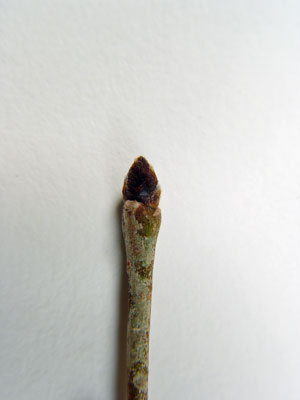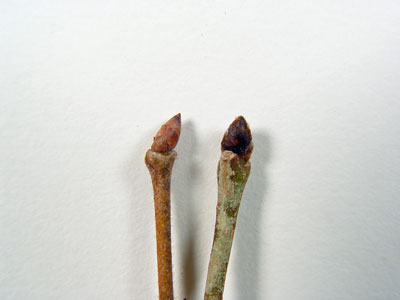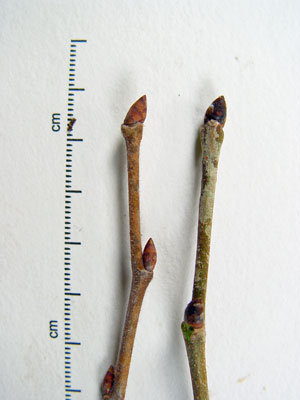DACF Home → Bureaus & Programs → Maine Natural Areas Program → Communities, Plants, and Animals → Rare Plants → Ulmus rubra

Ulmus rubra Muhl.
Slippery Elm
- State Rank: SH
- Global Rank: G5
- State Status: Possibly Extirpated
Habitat: Rich, often calcareous soil, alluvial woods. [Hardwood to mixed forest (forest, upland)]
Range: Southern Maine and southern Quebec to eastern North Dakota, south to Florida and Texas.
 (U. americana left, U. rubra right)
(U. americana left, U. rubra right)
Aids to Identification: This medium-sized elm has the characteristic arching form of the American elm (U. americana). The leaves are also similar in both species, though slightly larger (10-20 cm) in slippery elm. The distinguishing charcteristics of U. rubra are its rough, hairy twigs, and red, hairy buds. The flowers are borne on very short pedicels, versus U. americana of which the flowers are borne on long pedicels. The fruits are circular, winged, achenes (called samaras) that are 1.5-2 cm, slightly notched, and hairy only on the body of the samara (not on the wing).
 (U. americana left, U. rubra right)
(U. americana left, U. rubra right)
Ecological characteristics: Ecological relationships in Maine are not well known.
Phenology: Flowers March - May. Fruits May - June.
Family: Ulmaceae
Synonyms: Ulmus fulva Michx.
Known Distribution in Maine: This rare plant has historically been documented from a total of 4 town(s) in the following county(ies): Franklin, Oxford, Somerset, York.
Reason(s) for rarity: At northern limit of range; always scarce in Maine, but possibly declined due to overuse. In the past, the inner bark was used as a cough remedy and a scurvy preventative.
Conservation considerations: Unknown; no current locations for this species are documented.